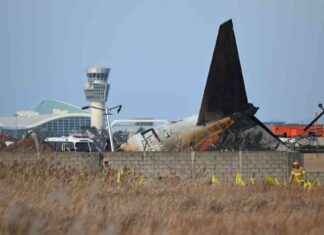Manhattan has the High Line. Brooklyn has Brooklyn Bridge Park. Now it is Queens’ turn to transform a vestige of its past into an amenity for its future.
A group of New Yorkers is advocating for the creation of the QueensWay, a 3.5-mile foot and bike path that would transform the derelict former Rockaway Beach branch of the Long Island Rail Road into a linear park running through southern Queens. The QueensWay would connect neighborhoods and businesses to each other and to public transit while reducing dependency on cars. It would give pedestrians an alternative to crossing the borough’s dangerous boulevards.
Advocacy group Friends of the QueensWay has received support from the Trust for Public Land to make the project happen. The two groups visited Crain’s last week to make their case. “Local residents say it’s time for the city to invest in this community,” said Karen Imas, a QueensWay activist who lives in Forest Hills.
article continues below advertisement
The $150 million needed to build the park is hardly chump change. But neither is it exorbitant by park-development standards. About $160 million in public funds have been invested in the High Line. And the city has pledged the same amount to buy a parcel to complete Bushwick Inlet Park in Williamsburg. Both are much smaller than the QueensWay’s 47 acres would be.
One downside of the project is that it would preclude the option of reclaiming the railway for mass transit. The Regional Plan Association has proposed using the right-of-way for a one-seat ride to JFK Airport. But that’s one of five potential options the group has identified for that purpose, and it’s neither the cheapest nor the easiest.
I don’t think some remote transit possibility justifies doing nothing today when it’s clear the QueensWay would immediately benefit six large neighborhoods. All the city has to do is assign the acreage to the Parks Department. But the de Blasio administration has yet to endorse the plan or put money behind it.
The mayor’s focus has been on housing, not parks. But the two are mutually beneficial, said Adrian Benepe, a senior vice president at the Trust for Public Land and a former city parks commissioner.
A first phase that passes by some big-box stores is already being planned. If the community is serious about its park, it could work on a redevelopment plan that includes retail and apartments. Revenue from the new development’s property taxes could fund the greenway. “I’ve never seen any buyer’s remorse when it comes to buying parks,” Benepe said.
Manhattan has the High Line. Brooklyn has Brooklyn Bridge Park. Now it is Queens’ turn to transform a vestige of its past into an amenity for its future.
A group of New Yorkers is advocating for the creation of the QueensWay, a 3.5-mile foot and bike path that would transform the derelict former Rockaway Beach branch of the Long Island Rail Road into a linear park running through southern Queens. The QueensWay would connect neighborhoods and businesses to each other and to public transit while reducing dependency on cars. It would give pedestrians an alternative to crossing the borough’s dangerous boulevards.
Advocacy group Friends of the QueensWay has received support from the Trust for Public Land to make the project happen. The two groups visited Crain’s last week to make their case. “Local residents say it’s time for the city to invest in this community,” said Karen Imas, a QueensWay activist who lives in Forest Hills.
The $150 million needed to build the park is hardly chump change. But neither is it exorbitant by park-development standards. About $160 million in public funds have been invested in the High Line. And the city has pledged the same amount to buy a parcel to complete Bushwick Inlet Park in Williamsburg. Both are much smaller than the QueensWay’s 47 acres would be.
One downside of the project is that it would preclude the option of reclaiming the railway for mass transit. The Regional Plan Association has proposed using the right-of-way for a one-seat ride to JFK Airport. But that’s one of five potential options the group has identified for that purpose, and it’s neither the cheapest nor the easiest.
I don’t think some remote transit possibility justifies doing nothing today when it’s clear the QueensWay would immediately benefit six large neighborhoods. All the city has to do is assign the acreage to the Parks Department. But the de Blasio administration has yet to endorse the plan or put money behind it.
The mayor’s focus has been on housing, not parks. But the two are mutually beneficial, said Adrian Benepe, a senior vice president at the Trust for Public Land and a former city parks commissioner.
A first phase that passes by some big-box stores is already being planned. If the community is serious about its park, it could work on a redevelopment plan that includes retail and apartments. Revenue from the new development’s property taxes could fund the greenway. “I’ve never seen any buyer’s remorse when it comes to buying parks,” Benepe said.
A version of this article appears in the February 6, 2017, print issue of Crain’s New York Business as “It’s Queens’ turn”.
Sign up for our FREE daily email newsletter. A summary of the day’s top business and political headlines from the newsroom of Crain’s New York Business.
More Newsletters ›
Our editors found this article on this site using Google and regenerated it for our readers.







